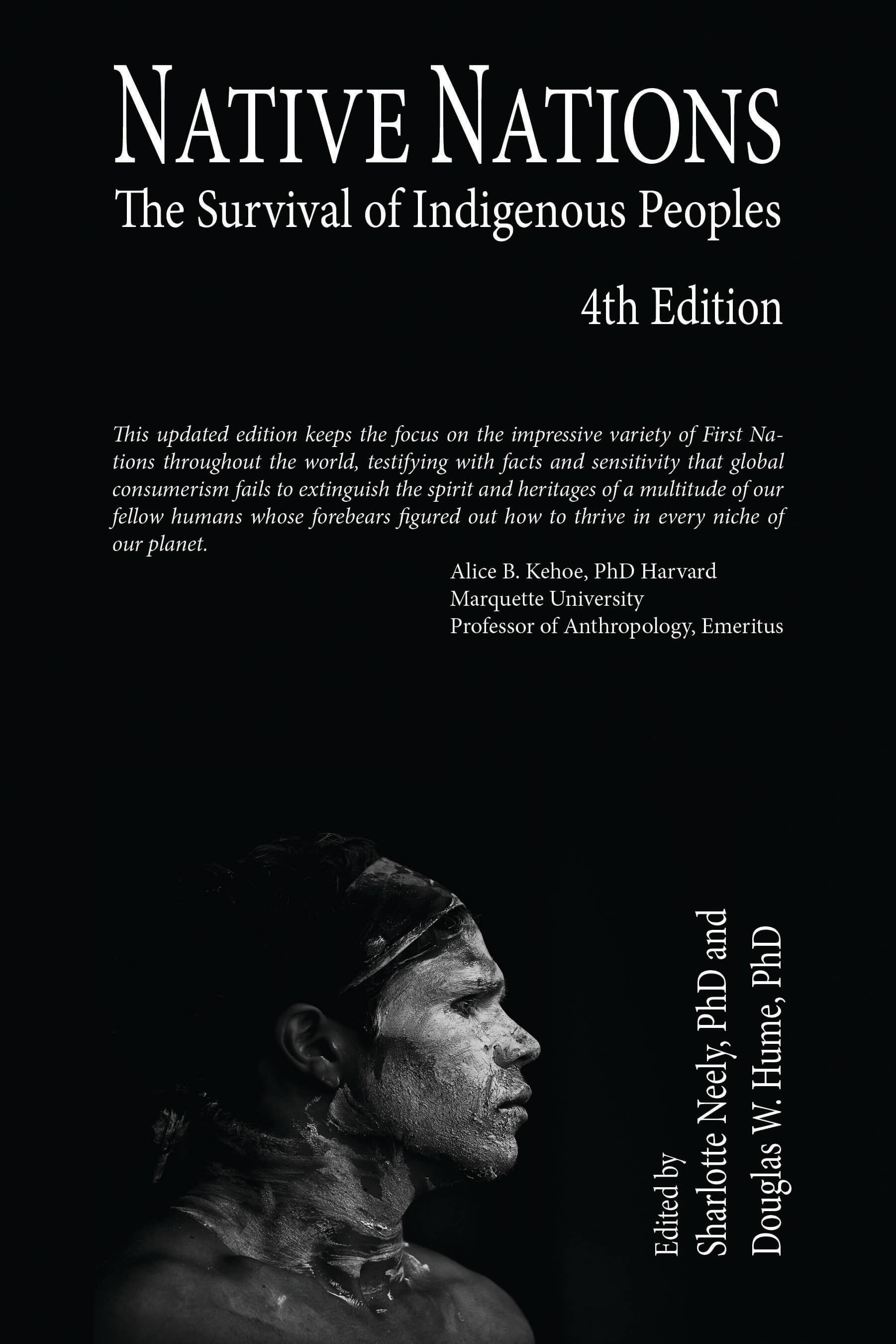Native Nations
The Survival of Indigenous Peoples, 4th Edition
Teaching Cultural Survival
Below are resources related to Douglas W. Hume's "Teaching Cultural Survival" chapter of Native Nations: The Survival of Indigenous Peoples, 4th Edition, edited by Sharlotte Neely and Douglas W. Hume.
Agencies & Organizations
- Cultural Survival
- Forest Peoples Programme
- International Labour Organization
- International Work Group for Indigenous Affairs
- LandMark
- Minority Rights Group International
- Native American Rights Fund
- Rights and Resources Initiative
- Survival International
- United Nations Declaration on the Rights of Indigenous Peoples
- United Nations Permanent Forum on Indigenous Issues
Discussion Questions
- What are the major phenomena endangering Indigenous Peoples the world over in the 21st century?
- Explain why these phenomena are a threat.
Documentary Films
- Safeguarding Intangible Cultural Heritage of Aymara communities in Bolivia, Chile and Peru
- The Garifuna Heritage, Part I & Part II
Further Reading
- Cernea, Michael M. and Kai Schmidt-Soltau. 2006. “Poverty Risks and National Parks: Policy Issues in Conservation and, Resettlement.” World Development 34 (10): 1808-1830. https://doi.org/10.1016/j.worlddev.2006.02.008
- Expert Mechanism on the Rights of Indigenous Peoples (EMRIP). 2017. Ten Years of the implementation of the United Nations Declaration on the Rights of Indigenous Peoples: Good Practices and Lessons Learned – 2007-2017. UN Doc. A/HRC/36/56.
- Hames, Raymond B. 2007. “The Ecologically Noble Savage Debate.” Annual Reviews of Anthropology 36: 177-190.
- International Labour Organization. 1989. International Labour Organization Convention (No. 169) Concerning Indigenous and Tribal Peoples in Independent Countries. Geneva: International Labour Organization (ILO).
- Kowalski, Joseph. 2017. “Imaginary Lines, Real Consequences: The Effect of the Militarization of the United States-Mexico Border on Indigenous Peoples.” American Indian Law Journal 5 (2): 643-667.
- Kuper, Adam J. 2003. “The Return of the Native.” Current Anthropology 44 (3): 389-411. https://doi.org/10.1086/382253
- Merlan, Francesca. 2009. “Indigeneity: Global and Local.” Current Anthropology 50 (3): 303-353. https://doi.org/10.1086/597667
- Niezen, Ronald, and Maria Sapignoli. 2017. “Introduction.” In Palaces of Hope: The Anthropology of the United Nations, edited by Ronald Niezen and Maria Sapignoli, 1-30. Cambridge: Cambridge University Press.
- Rights and Resources Initiative. 2017. From Risk and Conflict to Peace and Prosperity: The Urgency of Securing Community Land Rights in a Turbulent World. Washington, D.C.: Rights and Resources Initiative.
- United Nations. 2007. “United Nations Declaration on the Rights of Indigenous Peoples (UNDRIP).” United Nations General Assembly Resolution 61/295, September 13th, 2007. New York: United Nations.
- Valeggia, Claudia R. ,and J. Josh Snodgrass. 2015. “Health of Indigenous Peoples.” Annual Review of Anthropology 44: 117-135. https://doi.org/10.1146/annurev-anthro-102214-013831
- Wily, Elizabeth. 2011. “‘The Law is to Blame’: The Vulnerable Status of Common Property Rights in Sub-Saharan Africa.” Development and Change 42 (3): 733-757. https://doi.org/10.1111/j.1467-7660.2011.01712.x
- World Bank. 2016. Indigenous Peoples. Emerging Lessons Series No. 2. Washington, D.C.: World Bank.
